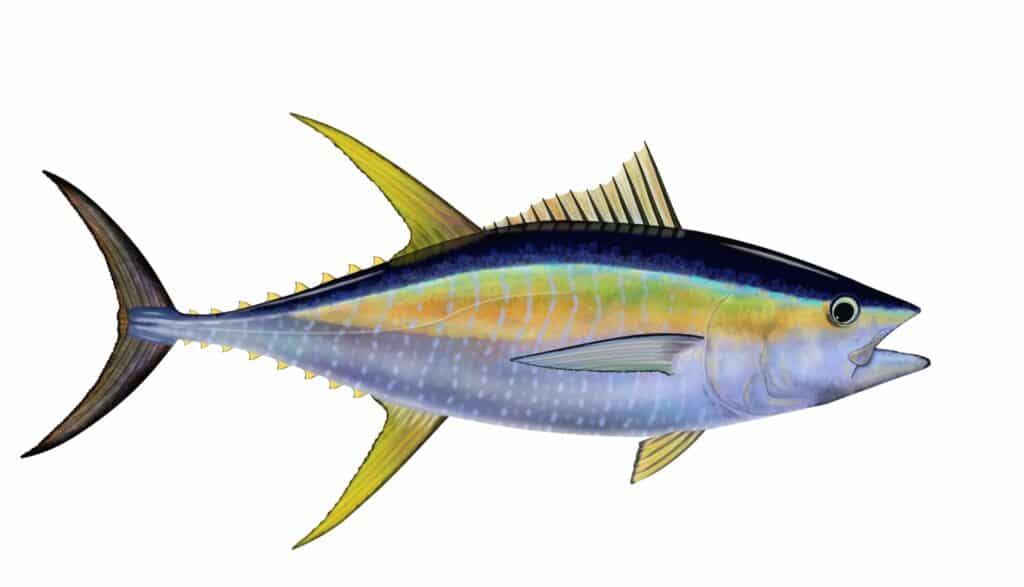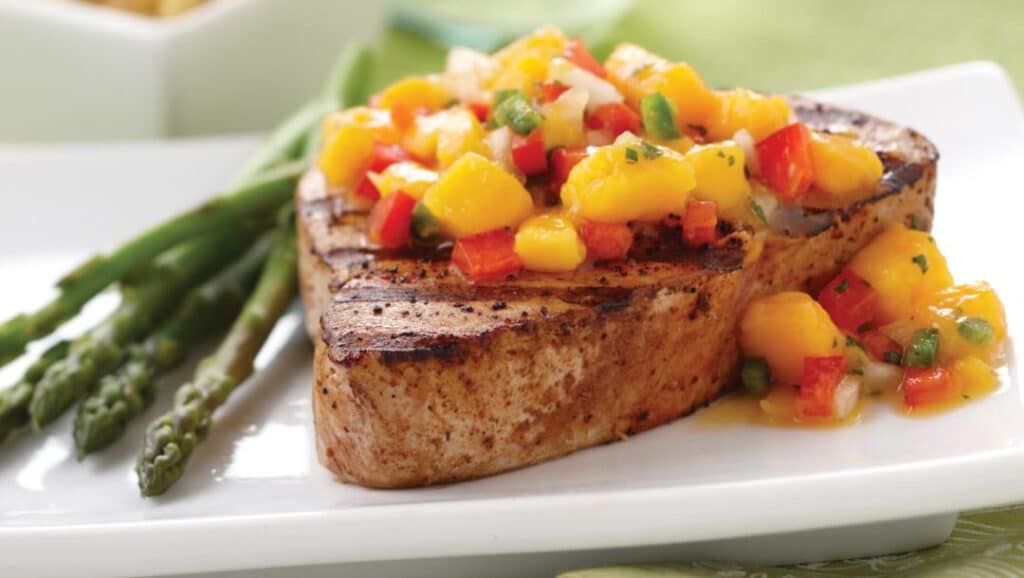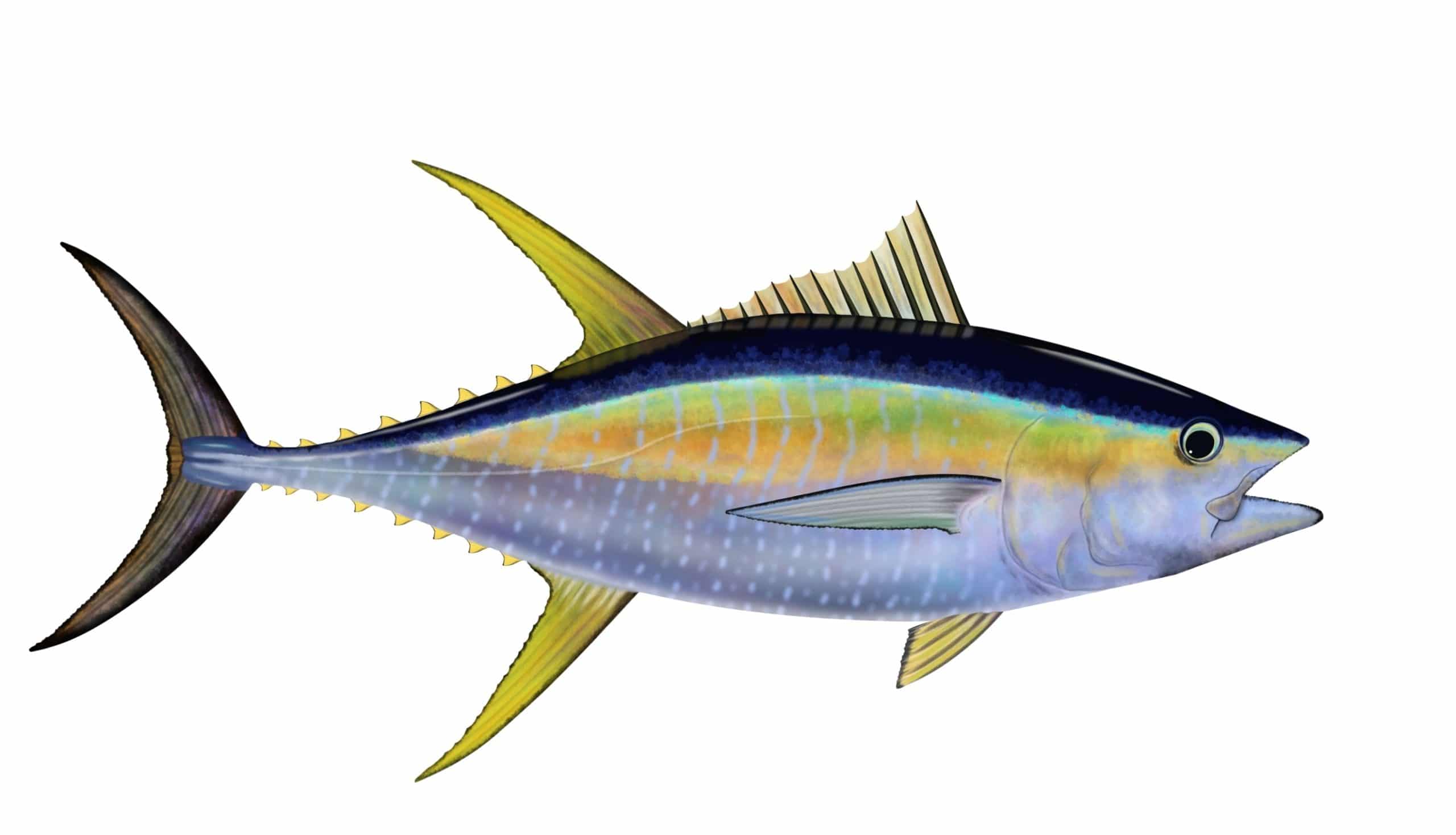
The yellowfin tuna is among the larger species of tuna, growing to weights over 180 kg (400 lb). However it’s significantly smaller than other large types like Atlantic and Pacific bluefins which can reach 450kgs or 990 pounds. It also falls short when compared with Bigeye tunas that average at around 83kg/182lbs in size while Southern Blue Fin Tun Protends on average @ 74 – 82 lbs
The yellowfin tuna is a curious fish that dwells in the top 100 m (330 ft) of oceanic waters, while penetrating to considerable depths. It has been recorded by sonic tracking as well; one tagged individual spent 85% their time between 50-75m but went on three dives up to 578 meters deep!
A single female Epipelagic zone Tuna was found with an archival tag from LARVA International Biometrics Corporation Ltd., located off South Africa’s west coast near Mossel Bay during surveys conducted over several years starting around 2010
While primarily found in deep offshore waters, yellowfin tuna may approach shore when suitable conditions exist. Mid-ocean islands such as the Hawaiian archipelago often host schools of these fish concentrated near beaches where they feed on baitfish that come into shallow water to breed or grow up towards larger sizes before becoming prey for predators like sharks.”
Yellowfin tuna are efficient predators that can take on any form of prey. They have an aligned shape, enabling them to pursuit and capture fast-moving baitfish such as flying fish or sauries while schooling species like myctophids ( Lantern Fish ) tend not only be taken but also feed off smaller members within their family including frigate mackerels which may live at sea surface levels – lantern sharks also do so sometimes too! In turn these larger saltwater animals rely heavily upon being eaten when young by mattering small handheld fIshes called “
Tuna are commonly caught by pole and line, which was the most common method before World War II. They would use live bait such as anchovies to attract school of tuna close enough for a fisherman on board with sturdy bamboo or fiberglass poles take them off reeling in jigged hooks stuck into their heads[1]. The fleet from San Diego were famous because they exploited abundant stocks of skipjack albacore along Mexico’s southern coastline while also going down further south where yellowfin lived too!
The practice of purse seining for yellowfin tuna became highly controversial in the late 1970s when it was recognized that these fish were also associating with porpoises, who are often called “porkeys” by fishermen. Commercial fishing companies have been aware this association since they first started catching spinner dolphins and pantropical spotted dolphins on their lines decades earlier!
How to target Yellowfin tuna
Fishing for yellowfin tuna can be a very rewarding experience, but it can also be difficult if you are not familiar with the right techniques. In this article, we will discuss how to target these fish and what is the best bait for tuna fishing.
First, let’s take a look at where to find yellowfin tuna. These fish can typically be found in offshore waters near reefs and wrecks. They are also known to congregate around floating objects such as buoys and logs. It is important to keep an eye out for birds diving into the water as this is usually a good indicator of where tuna are located.
Once you have found a spot where there are signs of tuna activity, it is time to start fishing. The most popular way to catch tuna is with a trolling lure. There are many different types of lures that can be used, but I would recommend using something that resembles a baitfish. When trolling, it is important to use a heavy weight so that your lure will reach the bottom quickly.
Another great way to fish for yellowfin tuna is by using live bait. The most common bait used for tuna fishing is squid, but you can also use mackerel, sardines, or any other type of small fish. If you are going to use live bait, make sure to use a sturdy hook and enough weight to keep your line in the water column.
Yellowfin tuna can be very picky when it comes to what they are willing to eat. The best way to ensure that you catch these fish is by using live bait, but if this isn’t an option then try using a trolling lure that resembles a small baitfish. It’s also important to keep in mind where yellowfin tuna can be found and use heavy weights when fishing so your lure reaches the bottom quickly.
Yellowfin tuna fishing tips
- Use a trolling lure that resembles a baitfish
- Use live bait such as squid, mackerel, or sardines
- Keep an eye out for birds diving into the water – this is usually a good indicator of where tuna are located.
Yellowfin tuna fish recipes

Now that you’ve caught a yellowfin tuna, it’s time to cook it up! Here are a few of my favorite recipes:
- Grilled tuna steak with mango salsa
- Blackened tuna tacos with avocado crema
- Tuna Nicoise salad

